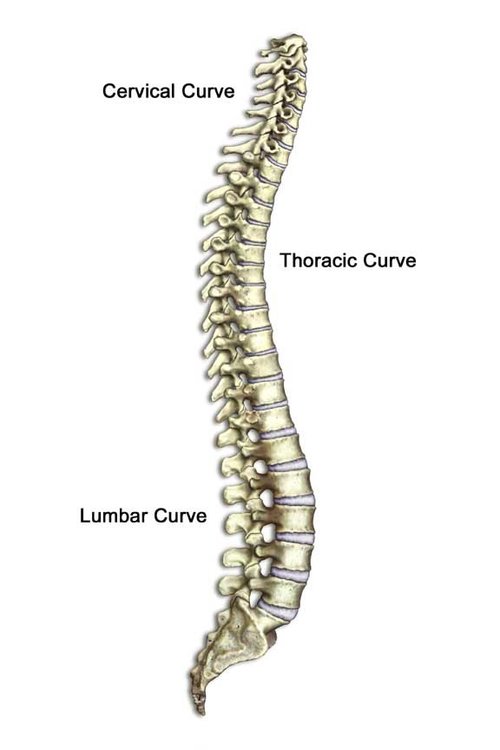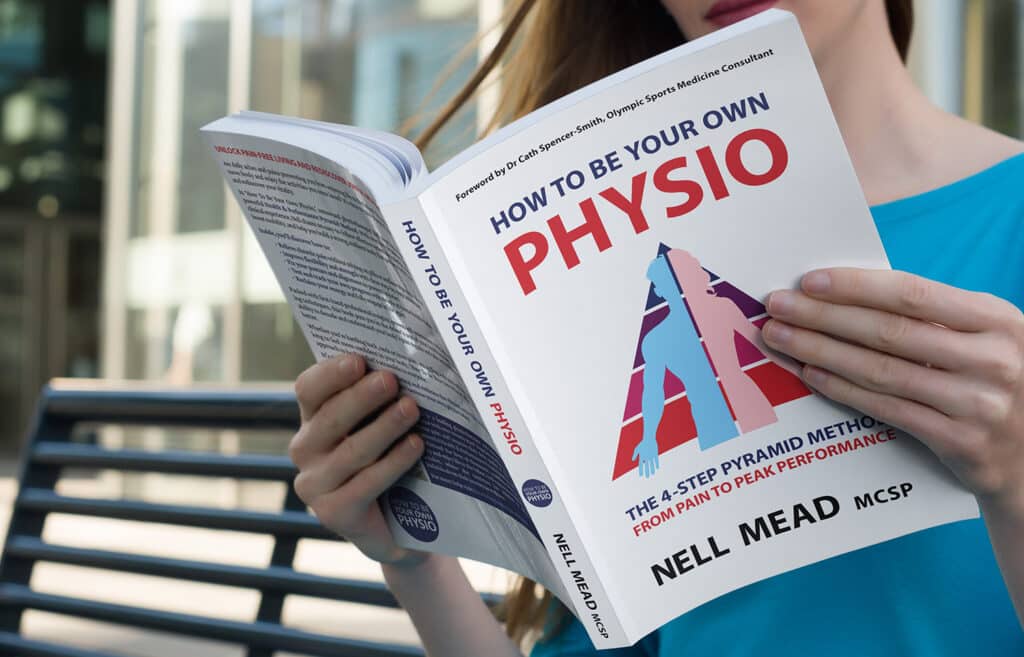I promised to explain Sarah Key’s theories about back pain; but first I need to go through how uninjured backs work.
The normal spine with its S-shaped curve
The spine is an S-shaped column of alternating vertebrae (bones) and discs.
At the front of the spine are the vertebral bodies — the building blocks of the spine — stacked between discs (the shock absorbers). This part of the spine is designed to bear weight and load.
The discs are really interesting. They are tough, rubbery cylinders with a liquid gel centre. The gel is filled with chemicals called proteoglycans. These attract water, which is how the centre stays liquid. When the disc is healthy, there is plenty of liquid in the centre of the disc (nucleus) and this is the part of the disc that bears load, a bit like a water balloon. The outer wall of the disc (annulus) is much harder but instead of being designed to bear load, it controls stretch. Essentially, the nucleus stops the disc from getting squashed flat, and the annulus stops it from being pulled apart.
It is extremely important that liquid flows in and out of the nucleus. Like every other tissue in the body, the nucleus is a live structure, so it needs nutrients to flow in and waste products to flow out; and they do this in the liquid. However, because the annulus is so tough, this process is very slow for discs. It is however affected by what we do. If we sit or stand still for long periods, gravity starts to squash the discs so that liquid flows out. When we lie down or stretch (including changing position dramatically, which stretches a portion of the disc at a time — so for example, if you touch your toes, the back of the disc will stretch, whereas if you lean back, the front of the disc stretches) then liquid flows in. This is why we are shorter when we go to bed than we are when we get up in the morning: our discs tend to get progressively squashed throughout the day, and plump up again when we are asleep.
The next really important parts of the spine are the facet joints at the back of the motion segment (the vertebra plus the disc just below it), also known as the zygaphophyseal joints. These aren’t really designed to take much load — only 16% of the full load taken by each motion segment. Their job is to control movement. In a healthy spine, bending forward all the way — for example, to touch your toes — is limited by how far the ligamentous capsule surrounding the facet joint will stretch. You can bend backwards, or twist, or bend sideways, until the bones that form the facet joints meet.
Apart from the discs and joints, the other vital component of normal spinal movement is the muscular support provided by the abdominal (tummy) muscles and the intrinsic muscles of the low back. A strong abdominal wall helps to offload some of the compression on your discs by providing an internal corset. This pressurises and elongates your abdominal cavity, which in turn exerts a lengthening force on the spine.
And that’s how your back is supposed to work! But as you may have noticed, it involves the smooth, synchronised functioning of lots of different parts. There’s not an awful lot of margin for error, so disharmony in any of these processes (disc, joint or muscle) can start a downward spiral of problems… which I’ll discuss later when I go through Sarah Key’s five stages of back pain!
If you have back pain or any kind of spinal dysfunction, it can be helpful to know how your spine should work so that you can identify any issues. Your spine is a delicate piece of machinery, with a lot of moving parts – so how should it work? You can read more, here.








